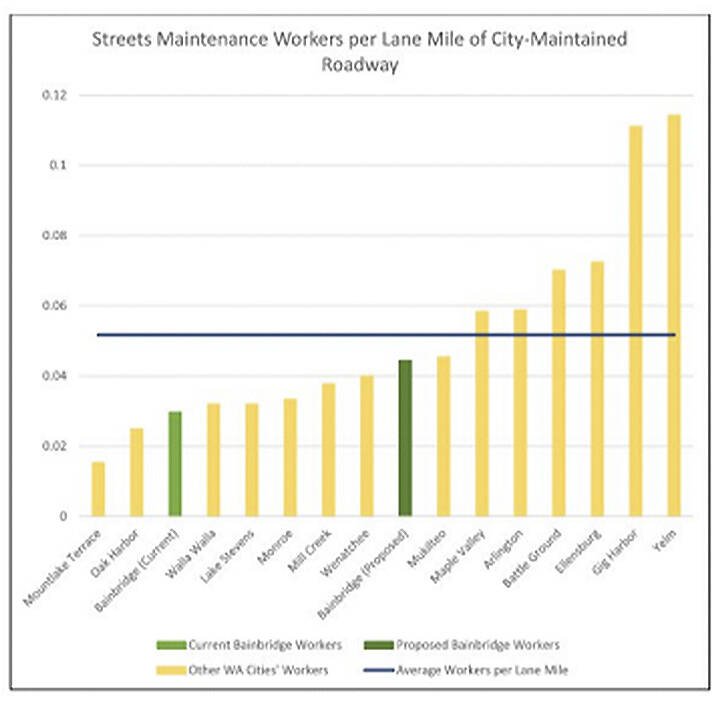Bainbridge Island city manager Blair King said in his weekly report Friday that the city will be asking the council for more funds for streets and maintenance at Tuesday’s study session.
He also said the council will start meeting again in person March 22, thanks to statewide restrictions ending due to COVID-19 reductions.
King said BI spends about $500,000 a year maintaining its 270 lane miles of pavement when studies say twice that amount should be spent. The city will ask for that $1 million amount
He also said regionally, for that many lane miles, the average number of employees is 12, while BI has just eight.
Also, the city has one person taking care of 90,000-square feet of city property, when the average is one person for every 50,000-square feet.
Public Works director Chris Wierzbicki said that puts the city behind in both areas, and it hopes to address that during the budget process later this year.
Preventative maintenance aims to minimize unplanned downtime and repair costs, a city memo says. And it can save taxpayers money over reactive maintenance.
The memo asks that a City Facilities Capital and Maintenance Fund be established with a $1 million annual set-aside.
It says only about 70% of needed work has been done, with no crack sealing, which helps roads last longer. Only about 50% of roadside work has been done, resulting in ponding and poor drainage, which adds to pavement deterioration.
The city owns a variety of facilities including City Hall, the police and court facilities, the Senior Center and various storage, park, farm and other investments that must be properly maintained and replaced to ensure they remain safe, that financial and service level investments are maintained, and that they provide a welcoming and usable space to serve their intended purposes, a city memo says.
It also owns 70 acres of parks and 9 acres of building grounds. Only about 60% of the work needed has been accomplished.
Also at the meeting the council will talk about the real estate excise tax. The funds are restricted for paying debt, maintenance such as street repair and capital projects. About $3.4 million is expected this year. The average over the last 10 years is $2.8 million, with a low of $1.3 million in 2013 and a high of $4.2 million last year.



